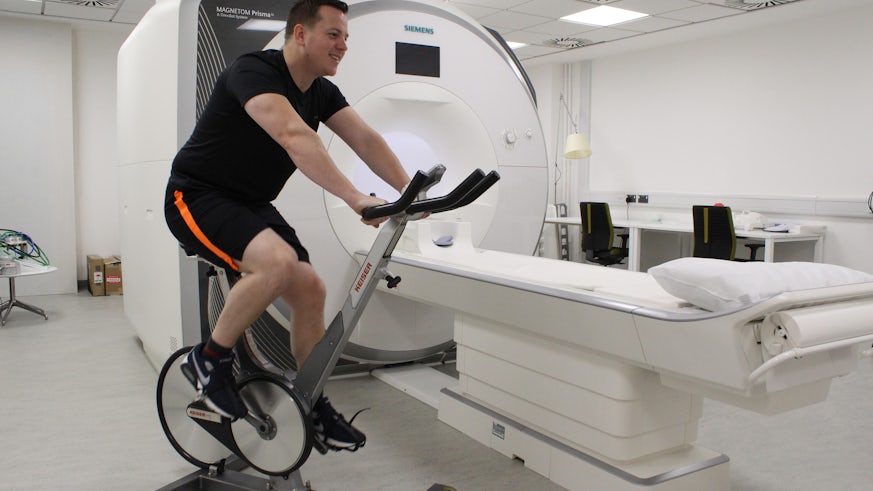Exercising for your brain
19 May 2017

Dr Jessica Steventon is investigating the relationship between exercise and the brain in relation to Huntington's disease.
“My current research is looking at whether exercise can reduce or slow some of the brain changes that are known to occur in Huntington’s disease.
“I mainly use MRI techniques to study neurodegenerative disease, and am interested in understanding whether certain non-drug based therapeutics, such as brain training and exercise, can be helpful in diseases such as Huntington’s disease." said Dr Steventon.
Huntington’s disease is a unique neurodegenerative disease because it is caused by a single faulty gene. This means that people can be identified before they go on to develop symptoms.
“This is particularly appealing to me as a neuroscientist as it means we have a unique window of opportunity where we can test therapeutics and see if we can delay, or even halt the onset of symptoms. We are also very lucky in Cardiff to have a large research group focused on Huntington’s disease.”
“My research, which is currently funded by the Waterloo Foundation, is focused on understanding the effects of exercise on the brain, and whether these effects may prevent or reduce some of the symptoms of Huntington’s disease.
“Generally, it is known that exercise is beneficial for brain health, and is particularly useful for example in people recovering from a stroke.

World-class facilities
Jessica uses magnetic resonance imaging (MRI) scanners, which use strong magnetic fields, radio waves, and field gradients to generate images of the brain.
“We are very fortunate at Cardiff University Brain Imaging Centre (CUBRIC) to have access to world-class brain imaging facilities. For example, we have a scanner with a static field strength of 7 Tesla, which means the spatial resolution of the brain images we acquire are vastly improved compared with lower fields strength scanners, such as those found in general hospitals. This improved image quality may illuminate novel disease processes and allows us to ask new and important questions about diseases of the brain.
We are currently coming towards the end of data analysis for our MRI and exercise study in HD, so we hope we will have many key new findings very soon.
Looking to the future
“If exercise is going to be useful therapeutically in HD, we need to understand how exercise works to affect the brain. This likely means we need to not just look at the brain in isolation, but also how peripheral organs, such as the heart, are affected.
“I am particularly interested in the effects of exercise on the blood vessels that supply the body and brain, and my goals for the future include looking at the interaction between cardio-vascular and cerebro-vascular effects of exercise.”
Get involved
If you're interested in helping with our Huntington's disease and exercise research, contact Jessica:

Dr Jessica Steventon
Research Associate
Brain Imaging Group
- steventonjj@cardiff.ac.uk
- +44 (0)29 2068 8758


